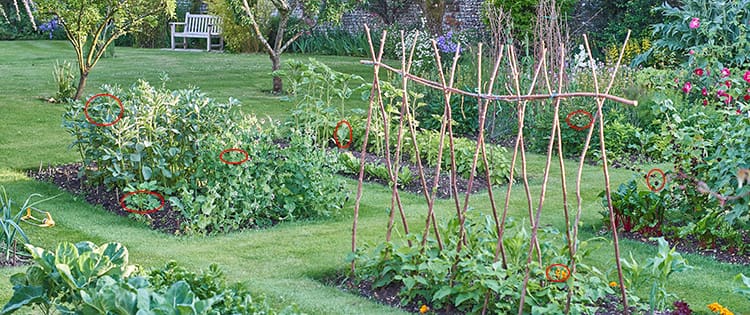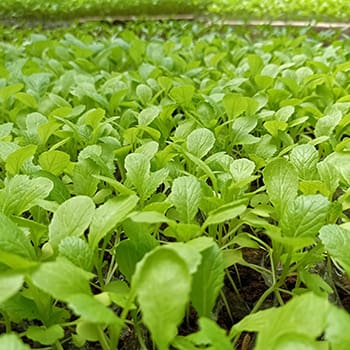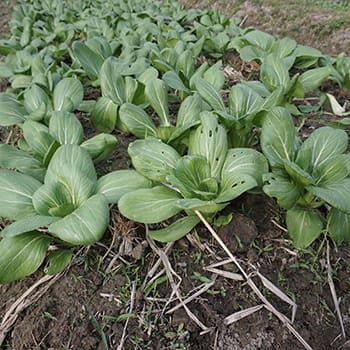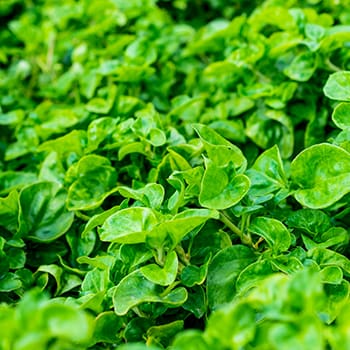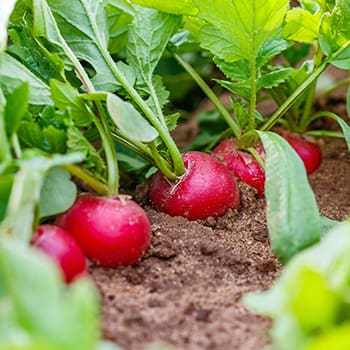For homesteaders wanting to indulge in the fruits of their labor sooner rather than later, there are plenty of vegetables you can plant this season that grow exceptionally fast. In fact, before you need to cut the grass again, you’ll be able to harvest your produce. You’ll be amazed to find that there are some vegetables that take as little as five days to grow! With that said, here are 10 mouth-watering vegetables that grow faster than grass.
Peas: Sowing to Harvest 60 – 70 Days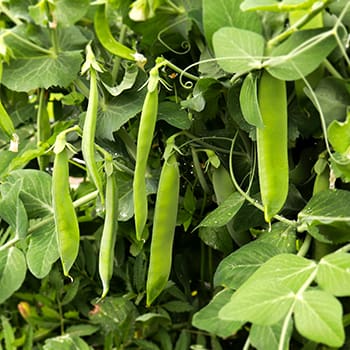
Peas are a nutritious and versatile ingredient that can be used for a variety of dishes such as pea soup, pea risotto, and pea and potato curry.
They are best grown in cool weather, and they prefer well-drained soil that is rich in organic matter. Plant the seeds directly in the ground, around 1 inch apart.
Companion plants for peas include beans, carrots, radishes, lettuce, and marigolds.
Dwarf Green Beans: Sowing to Harvest 60 Days
Are you looking to prepare a green bean stir fry, casserole, or salad in the next couple of months? If so, start growing your dwarf green beans today, and within 60 days, they’ll be ready to eat.
Plant the seeds 1-2 inches apart and 1 inch deep. If you’re planting rows, space them between 12-18 inches apart. Water the beans consistently and deeply, especially during dry spells. To suppress weed growth and retain moisture, add some mulch around the plants.
Companion plants for dwarf green beans include cucumbers, carrots, radishes, and nasturtiums.
Mustard: Sowing to Harvest 30 Days
Mustard makes a delightful addition to many dishes. Its tangy and pungent flavor provides a zesty and sharp kick to brighten up any meal.
Mustard thrives in full sun to partial shade; therefore, take this into consideration when planting. Additionally, you’ll need to thin the seedlings out once they start growing to give them enough space. Monitor your mustard plants for pests such as caterpillars, flea beetles, and aphids.
Companion plants for mustard include: Borage, marigolds, lettuce, carrots, and radishes.
Sorrel: Sowing to Harvest 60 Days
To start growing sorrel, choose a location in your garden that gets at least 4-6 hours of direct sunlight per day. The plant prefers well-drained soil with a pH level between 6.0 and 7.0.
Sorrel can be grown from seeds or transplants; plant them 12-18 inches apart. Sow the seeds about ½ an inch deep and cover them with soil. If using transplants, dig a hole slightly larger than the root ball, place the transplant in the hole, and gently firm the soil around it.
Companion plants for sorrel include: Strawberries, marjoram, lettuce, and spinach.
Bok Choy: Sowing to Harvest 45-75 Days
Bok choy is also known as pak choi or Chinese cabbage. The plant thrives best in cool weather and partial shade; therefore, choose an area in your garden that receives morning sun and afternoon shade, or spotted sunlight throughout the day.
Bok choy can be grown in the spring or fall. For spring planting, sow the seeds as soon as the soil can be worked. For fall planting, start the seeds 6-8 weeks before the first expected frost date.
Companion plants for bok choy include: Scallions, cabbage, marigolds, and mint.
Kale: Sowing to Harvest 50 Days
Kale grows best in well-drained soil that is rich in organic matter.
Plant kale seeds about ¼ to ½ an inch deep, and space them 12-18 inches apart. Alternatively, you can start kale seeds indoors in seed trays and transplant the seedlings into the garden when they are 4-6 inches tall.
Companion plants for kale include: Nasturtiums, thyme, celery, and onions.
Watercress: Sowing to Harvest 5-7 Days
Watercress is a water-loving plant that thrives in wet conditions. It’s best to grow watercress near a water source or in a location with consistent moisture. Therefore, consider planting watercress near a stream, pond, or in container with a constant water supply.
The plant does best in partial shade to full sun; however, it can tolerate some shade, especially in hotter climates. Choose an area that receives a few hours of direct sunlight a day. The soil should be well-drained, fertile, and rich in organic matter. Whether growing in water or soil, watercress requires regular watering.
If you’re growing the plant in a pot, it will need to be submerged in 2-3 inches of water at all times. Watercress is a low-maintenance plant and it doesn’t need a lot of fertilization. Nevertheless, you can improve growth by adding a balanced organic fertilizer to the soil before planting.
Companion plants for watercress include: Mint, nasturtiums, chervil, and parsley.
Salad Leaves: Sowing to Harvest 21 Days
Sow seeds directly into the prepared soil. For most salad leaf varieties, the typical spacing between rows ranges from 6 to 12 inches.
Salad leaves benefit from regular fertilization; before planting, add organic matter to the soil such as well-rotted manure, or compost.
Additionally, you can use foliar spray or a balanced organic fertilizer.
Companion plants for salad leaves include: Dill, thyme, chives, beans, and marigolds.
Radishes: Sowing to Harvest 25 Days
Sow radish seeds as soon as you can work the soil. Plant them in well-drained soil with a pH range of 5.5 to 7.0. Prepare the soil by removing weeds and loosening it with a tiller or garden fork.
Avoid overwatering radishes because it can cause them to split, or become pithy.
Companion plants for radishes include: Spinach, peas, beans, marigolds, and cucumbers.
Spinach: Sowing to Harvest 30 Days
Spinach prefers cool weather, so it’s best to plant the seeds in early spring, later summer, or early fall.
The soil temperature should be around 50-50 degrees F for optimal germination.
Companion plants for spinach include: Lettuce, kale, radishes, and strawberries.
Final Thoughts
The benefits of growing vegetables quickly extend beyond mere efficiency and convenience. It also allows you to maximize your growing season by enabling you to sow multiple crops within a limited time frame.
This is especially advantageous for regions with unpredictable weather patterns or short growing seasons. So now that you know what vegetables grow faster than grass, it’s time to get planting.
You may also like:
Veggies You Only Plant Once And Harvest Forever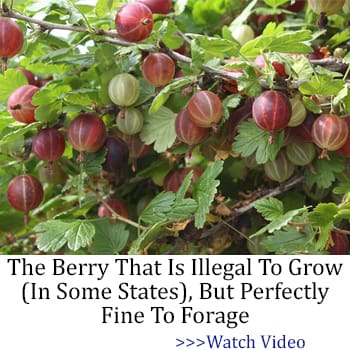
The Natural Painkiller that Grows in Your Backyard (Video)
If You See This Jumping Worm In Your Garden, Kill It Immediately!
